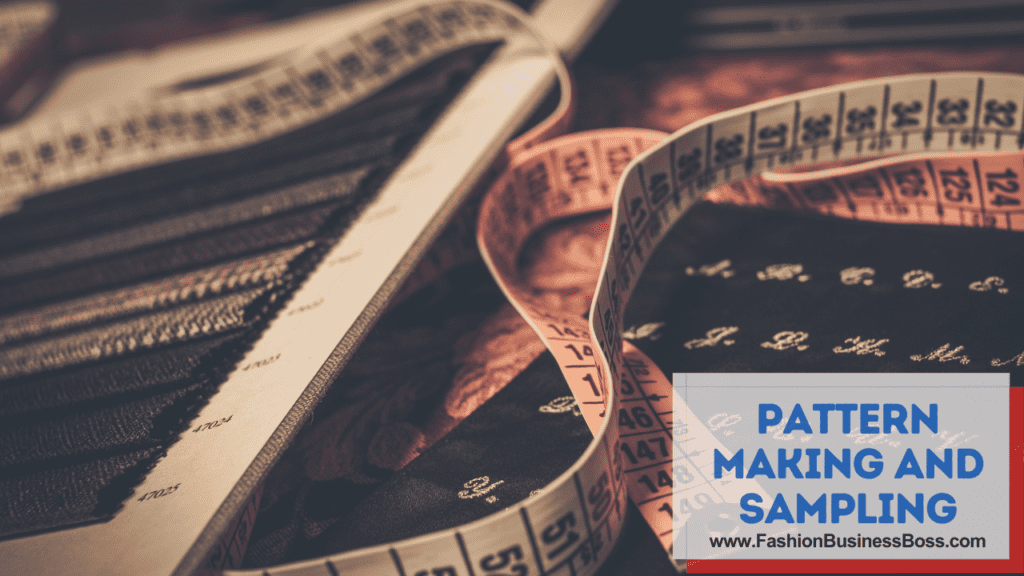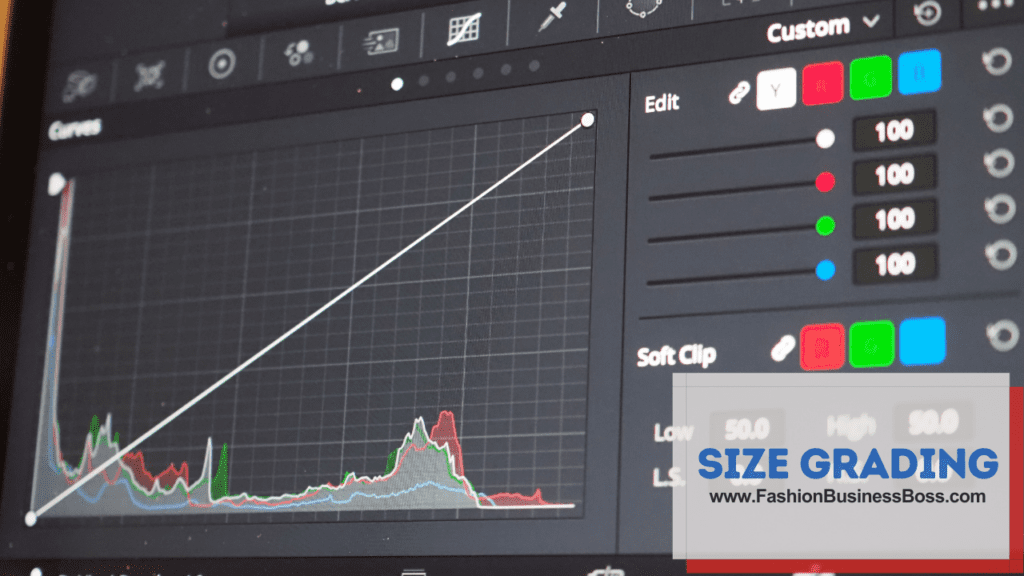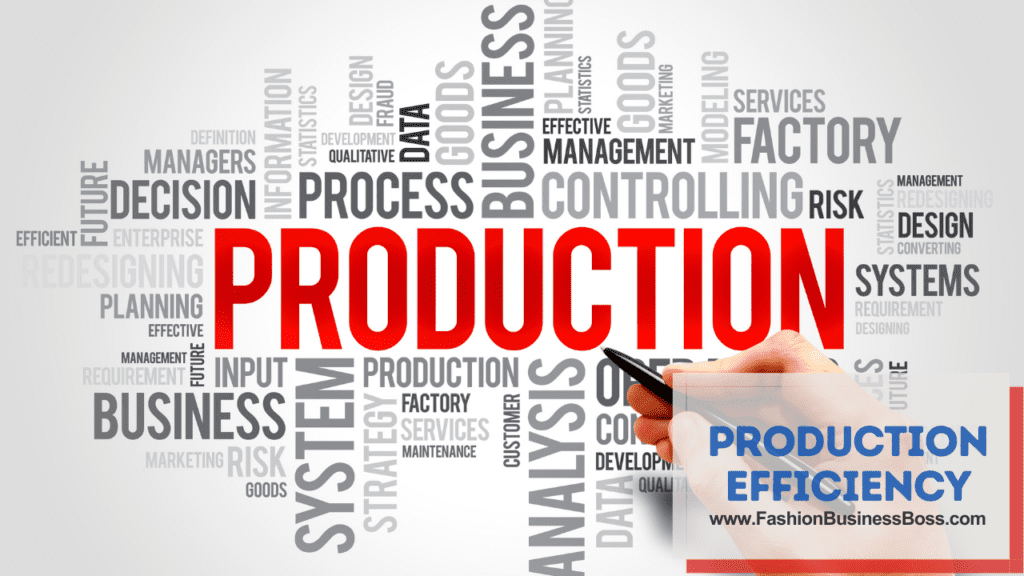The fashion industry is a dynamic market that allows for creativity and self-expression. If you’ve ever dreamed of starting your own clothing line, this guide is here to help you turn that dream into a reality. Manufacturing your own clothing line can be a great venture, but it requires careful planning, hard work, and attention to detail.
To manufacture clothing, create patterns and samples for design testing. Source materials and cut fabrics with precision. Ensure quality in sewing and labeling. Develop size grading, care labels, and efficient production processes. Manage inventory effectively.
In this article, we will walk you through the essential steps to manufacture your own clothing line.
Pattern Making and Sampling

Pattern making and sampling are vital stages in clothing manufacturing. During pattern making, precise templates for each clothing item are crafted based on your unique designs. These templates serve as the blueprint for production.
Once patterns are meticulously prepared, the next step involves crafting samples. Samples provide a tangible representation of your design, allowing you to evaluate its design, fit, and functionality. This phase is iterative, meaning you may need to make several adjustments to get the desired outcome. It’s a crucial phase that ensures your clothing meets your design specifications.
In essence, pattern making and sampling are like creating a recipe and preparing a test dish before cooking a full meal. This meticulous approach minimizes errors and ensures that the final product matches your vision. It’s a step worth dedicating time and effort to in order to produce quality clothing.
Read more about: Crafting Your Fashion Identity: How to Get Your Own Clothes Made?
Material Sourcing
Material sourcing plays a crucial role in clothing manufacturing. To start, you’ll need to identify suppliers you can trust for fabrics, trims, and accessories needed for your clothing line. It’s essential to establish a dependable network of suppliers.
When sourcing materials, there are several key factors to consider. Firstly, quality is paramount. Ensure that the materials meet your standards for durability, appearance, and comfort. Quality is the foundation of a good product.
Secondly, consider the cost. It’s important to strike a balance between quality and affordability. Overpaying for materials can erode your profit margins, so effective cost management is essential.
Lastly, look at material availability. Ensure your chosen materials are consistently accessible to meet your production needs.
Cutting and Fabric Preparation
Cutting and fabric preparation are pivotal steps in the manufacturing process. Once you have your patterns ready, the next task is to precisely cut the chosen fabric according to these patterns. This step is essential for ensuring accuracy and efficiency during manufacturing.
The accuracy of the cutting process is vital to the overall quality of your clothing items. It’s like putting together pieces of a puzzle – if they don’t fit perfectly, the final picture won’t be as desired. A keen eye for detail and precision is necessary to make sure that the fabric pieces match the intended design.
Careful cutting minimizes waste and optimizes material use. Efficient material use is not only cost-effective but also more environmentally responsible. Reducing waste lessens the impact on both your budget and the planet.
Cutting and fabric preparation may seem like a technical step, but it’s the foundation upon which your clothing line is built. Precision and efficiency in this stage are essential for producing quality garments that align with your design and sustainability goals.
Sewing and Assembly

Sewing and assembly are the core activities in crafting your clothing items. This phase involves the skillful work of experienced seamstresses or the precision of sewing machines. They work diligently to assemble the garments, following the patterns and design specifications meticulously.
The seamstresses or machines act like artisans, combining the cut fabric pieces to create the final clothing item. Their expertise ensures that the clothing comes together as intended, reflecting the design you envisioned.
Maintaining quality and consistency during the sewing process is of utmost importance. It’s akin to a baker ensuring that every cake they make is consistently delicious. Attention to detail, like even stitches and proper alignment, guarantees that each piece meets your set standards.
Sewing and assembly are the hands-on stages where your clothing items take shape. It requires skilled hands or well-calibrated machines to make sure the final products are in line with your design and quality goals.
Read more about:Crafting Your Dream: Step-by-Step Guide to Launching a Clothing Brand
Quality Control During Production
Quality control during production is a fundamental part of ensuring that your clothing items meet the desired standards. It involves implementing strict and thorough quality checks at various stages of the production process. The aim is to identify any issues or defects as early as possible.
Think of it as a detective’s work, where you closely examine every aspect of your clothing items to spot any irregularities. This attention to detail helps in preventing problems from progressing to the final product, saving both time and resources.
Another crucial aspect of quality control is maintaining open communication with the production team. This means fostering a culture of transparency and collaboration. If any quality concerns arise, it’s vital to address them promptly. It’s like a team working together to solve a puzzle – everyone’s input and observations are essential.
Quality control during production acts as a safeguard to ensure that your clothing items meet the desired standards. It involves careful examination and swift communication to prevent issues from affecting the final product, contributing to the overall quality of your clothing line.
Labeling and Branding
Labeling and branding are pivotal elements in establishing your clothing line’s identity. During this phase, you make decisions about the labels, tags, and branding elements that will represent your brand on each clothing item.
Think of it as naming your creation. These labels, tags, and branding elements serve as the identity cards for your clothing. They distinguish your brand and set it apart from others.
Once you’ve made these decisions, it’s equally essential to ensure that these elements are correctly placed and securely attached to each item. It’s like making sure every book has the right title and author’s name on the cover. This step guarantees that your customers can easily recognize and connect with your brand.
Labeling and branding are about defining and communicating your brand’s identity. Your clothing line’s labels and branding elements are the name tags that introduce your creations to the world. Their correct placement and secure attachment are necessary to make your brand easily recognizable and memorable.
Size Grading

Size grading is a critical process when offering multiple sizes within your clothing line. It involves creating a system to adjust the patterns proportionally to accommodate different sizes.
Picture it as a set of keys, each fitting a different lock. The size grading system ensures that each key (size) fits its respective lock (pattern) correctly. By proportionally altering the patterns, you make sure that the clothing fits as intended for all sizes.
The accuracy of size grading is like having the right tools for the job. If the grading isn’t precise, the final clothing items won’t fit customers as they expect. It can lead to discomfort and dissatisfaction, which you’d want to avoid.
Size grading is about ensuring that your clothing accommodates various body sizes accurately. It’s like tailoring your patterns to fit different body types, making your clothing line inclusive and appealing to a broader range of customers.
Read more about: Crafting Your Dream: How to Begin a Clothing Business?
Care and Maintenance Labels
Care and maintenance labels provide crucial information to customers about how to care for and preserve their clothing. These labels offer clear instructions on how to clean, wash, and maintain the garments, ensuring they last longer and remain in good condition.
Imagine these labels as a set of guidelines, like a recipe to keep your clothing looking its best. They tell you the dos and don’ts of caring for your clothes.
Furthermore, it’s important to adhere to care label regulations. Think of it as following traffic rules – it’s essential to ensure the safety and well-being of everyone. Compliance with these regulations is vital to prevent any legal issues and to provide your customers with accurate care information.
Care and maintenance labels serve as user manuals for your clothing items. They help your customers understand how to preserve and clean their garments, ultimately extending the life of the clothing. Adhering to care label regulations is not just a best practice but a necessary step to protect your brand and provide customers with accurate information.
Fitting and Testing
Fitting and testing are vital phases to ensure the quality and functionality of your clothing. During these stages, you engage in fitting sessions with models to assess the comfort and fit of your garments. It’s like trying on a pair of shoes to ensure they fit comfortably; in this case, models help determine if your clothing feels and looks right on the body.
Testing your clothing under various conditions is akin to putting a car through its paces in different weather and road conditions. It’s about identifying how your clothing performs in real-life scenarios. This testing helps you spot potential areas for improvement, making sure your clothing is versatile and reliable.
Fitting and testing are the checkpoints that ensure your clothing is not only aesthetically appealing but also functional and comfortable. These phases help you refine your designs and make necessary adjustments to meet the expectations of your customers.
Production Efficiency

Production efficiency is all about improving the way you make your clothing. It means finding better ways to create your items, which has several benefits: it helps you save money, maintain good quality, and get things done faster.
To do this, you should always look for ways to make your production process better. Think of it like a chef finding a quicker and more efficient way to prepare a meal without compromising on taste. You want to make your clothes faster, cheaper, and just as good, if not better, than before.
One way to achieve this is by using something called “lean manufacturing principles.” These are like a set of rules or guidelines that help you organize and manage your production process in the most efficient way. Imagine it as a recipe for growth in your clothing-making kitchen.
Read more about: Crafting Your Clothing Brand Budget: What to Expect
Inventory Management
Inventory management is like keeping an eye on your supplies to make sure you have the right amount. It’s a balancing act to have enough products in stock to meet what your customers want, without making too many and ending up with wasted items.
Think of it as managing your groceries. You don’t want to run out of the essentials, like milk or bread, but you also don’t want to buy so much that they go bad before you can use them. Inventory management is about finding that sweet spot for your clothing items.
To do this, you need to keep careful records of what you have, what you’ve sold, and what you need to make. It’s like checking your refrigerator to see what’s there before making a shopping list. This way, you can ensure that you’re meeting customer demands without having too much or too little on hand.
Inventory management is like being a smart shopper for your clothing line. It’s about keeping the right amount of products available to satisfy your customers without ending up with excess stock that goes to waste.
Conclusion
Creating your own clothing line from scratch is a complex and multifaceted endeavor. From the initial design and development stage through to production, quality control, and inventory management, attention to detail is key. While it may be challenging, with the right planning, resources, and dedication, you can bring your clothing line to life. Remember that growth in the fashion industry often requires creativity, adaptability, and a deep understanding of your target audience. Stay true to your brand’s identity, and your clothing line may become a beloved part of the fashion world.
Frequently Asked Questions

Q: What measures are typically taken to ensure quality during clothing production?
A: Quality is maintained through rigorous checks during production, ongoing communication with the production team to address issues, and adherence to clear quality standards.
Q: How should one go about sourcing materials for a clothing line effectively?
A: Effective material sourcing involves identifying reliable suppliers for fabrics, trims, and accessories, considering factors such as quality, cost, and availability, and negotiating bulk purchase terms.
Q: What strategies are commonly employed to boost production efficiency in clothing lines?
A: Production efficiency is improved through ongoing process optimization, cost reduction, and quality maintenance. Lean manufacturing principles are often implemented to streamline operations.
To learn more about starting your own clothing business, check out my startup documents here.
Please note that the contents of this blog are for informational and entertainment purposes only and should not be construed as legal advice. Any action taken based on the information provided in this blog is solely at your own risk. Additionally, all images used in this blog are generated under the CC0 license of Creative Commons, which means they are free to use for any purpose without attribution.

Meet Shawn Chun: Entrepreneur and Fashion Business Fan.
I’m a happy individual who happens to be an entrepreneur. I have owned several types of businesses in my life from a coffee shop to an import and export business to an online review business plus a few more and now I create online resources for those interested in starting new ventures. It’s demanding work but I love it. I do it for those passionate about their business and their goals. That’s why when I meet a designer or boutique owner at a craft fair, farmers market, retail location or anywhere else I see myself. I know how hard the struggle is to retain clients, find good employees and keep the business growing all while trying to stay competitive.
That’s why I created Fashion Business Boss: I want to help fashion business owners like you build a thriving business that brings you endless joy and supports your ideal lifestyle.

